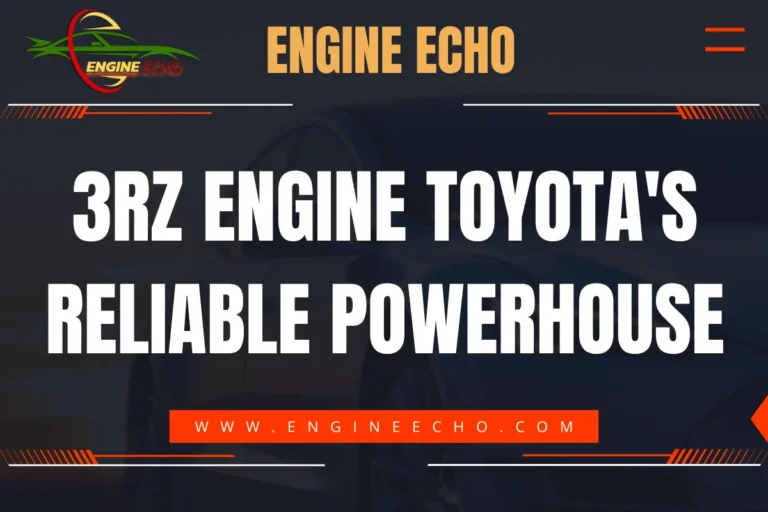Cars with BS6 Engines: What to Know

Key Takeaways
- Cleaner Air: BS6 engines reduce air pollution significantly by cutting harmful emissions like NOx and particulate matter by up to 70%.
- Fuel Efficiency: Advanced technologies in BS6 engines deliver better mileage, reducing fuel consumption in the long run.
- Stricter Standards: BS6 norms bring India closer to global emission standards, aligning with Euro 6 regulations.
- Cost vs. Benefits: While BS6 vehicles are more expensive upfront, long-term fuel savings and environmental benefits outweigh the costs.
- Future-Ready: BS6 standards are paving the way for electric vehicles (EVs) and sustainable transport solutions.
Introduction: Why BS6 Engines Matter
Air pollution in India has reached critical levels, with cities like Delhi, Mumbai, and Bengaluru frequently topping the global charts for poor air quality. Recognizing the urgent need to combat emissions, the Indian government introduced Bharat Stage 6 (BS6) emission norms in 2020, leapfrogging directly from BS4.
This transition was not just regulatory—it marked a paradigm shift in how vehicles are designed, manufactured, and used in India. BS6 standards are part of a larger effort to reduce India’s carbon footprint, protect public health, and ensure sustainable urban development.
Key Features of BS6 Engines
1. Improved Fuel Efficiency
- BS6 engines are engineered to maximize fuel combustion, ensuring more energy is extracted from every drop of fuel.
- With this enhancement, cars travel farther per liter of fuel, making them ideal for both daily commutes and long-distance travel.
2. Reduced Emissions
- Diesel engines have seen up to 70% reduction in NOx emissions, while particulate matter emissions have dropped drastically.
- Cars now include Diesel Particulate Filters (DPF), which trap and burn harmful particulates before they exit the exhaust.
3. Advanced Technologies
- BS6 engines utilize cutting-edge systems like Selective Catalytic Reduction (SCR) and Gasoline Particulate Filters (GPF) to meet emission standards.
- Enhanced oxygen sensors and onboard diagnostics ensure real-time emission monitoring for better compliance.
Advantages of BS6 Engines
1. Environmental Benefits
- Substantial reductions in pollutants like NOx and PM (Particulate Matter) mean cleaner air for urban areas.
- Early adopters of BS6 vehicles are directly contributing to lowering air pollution levels.
2. Economic Benefits
- BS6 engines’ better fuel efficiency leads to lower running costs over time.
- Many BS6-compliant vehicles qualify for government subsidies and incentives, reducing the overall financial burden.
3. Health Benefits
- Cleaner air means fewer cases of respiratory ailments like asthma and bronchitis, particularly in metro cities.
- A study by the Central Pollution Control Board (CPCB) suggests that BS6 compliance could reduce vehicle-related pollution deaths by 20% in major cities.
Popular Car Models with BS6 Engines
Sedans
- Honda City: A reliable sedan known for its refined engine and superior fuel economy, now BS6-compliant.
- Maruti Ciaz: Combines comfort and efficiency, making it a favorite among Indian families.
SUVs
- Kia Seltos: Offers a perfect blend of performance and eco-friendliness.
- Hyundai Creta: A consistent top-seller with BS6 compliance, striking the balance between power and emissions.
Hatchbacks
- Maruti Suzuki Swift: Compact, stylish, and now a greener option with BS6 engines.
- Hyundai i20: A feature-packed hatchback delivering performance with cleaner emissions.
BS6 Diesel vs. BS6 Petrol Engines
1. Emission Differences
- BS6 norms have reduced NOx emissions in diesel engines by up to 70% and particulate matter by 80%.
- Petrol engines, though naturally cleaner, also benefit from advanced emission controls under BS6.
2. Performance Comparison
- Diesel engines still excel in torque and fuel economy, making them a great choice for long-distance drivers.
- Petrol engines are quieter and require less maintenance, appealing to urban buyers who prioritize comfort.
3. Maintenance and Costs
- BS6 diesel engines come with DPFs, which require periodic regeneration to stay efficient.
- Using BS6 fuel is critical for both diesel and petrol engines to avoid clogging or damage to advanced systems.
Challenges Faced by BS6 Engines
1. Higher Production Costs
- Manufacturing BS6 engines involves advanced technologies, making them 10–20% costlier than BS4 engines.
- The higher costs are often passed on to consumers, raising vehicle prices.
2. Fuel Quality Issues
- BS6-compliant fuel is not universally available in rural or remote areas, making refueling a challenge for some drivers.
- Using non-compliant fuel can damage BS6 engines, leading to higher maintenance costs.
3. Technological Learning Curve
- Adapting to BS6 technologies, like using cleaner fuels and understanding maintenance needs, is a learning process for consumers.
Impact on the Automobile Industry
1. Market Shifts
- Consumer preferences have shifted toward cleaner and more fuel-efficient vehicles, boosting sales in the mid-range and premium segments.
2. R&D Investments
- Auto manufacturers have invested heavily in research and development to comply with BS6 norms, accelerating innovation in the industry.
3. Impact on Sales
- While initial sales of BS6 vehicles were slow due to higher costs, demand has steadily increased, particularly in urban areas.
BS6 Engines and the Future of Electric Vehicles
1. Hybrid Engines
- Hybrid vehicles, which combine BS6 engines with electric motors, offer the perfect balance between lower emissions and better fuel efficiency.
2. EV Readiness
- The adoption of BS6 has prepared the automotive industry for the transition to electric vehicles, as many of the emission-reduction technologies are complementary to EV systems.
3. Long-Term Goals
- BS6 is a critical step in India’s journey toward sustainable transportation, aligning with global climate change goals.
Maintenance Tips for BS6 Vehicles
1. Fuel Quality
- Always use BS6-compliant fuel to avoid engine damage and ensure optimal performance.
- Refuel at reputable stations to prevent impurities from entering your engine.
2. Regular Servicing
- Adhere to the manufacturer’s maintenance schedule to keep emission control systems functioning properly.
3. Emission Check-Ups
- Regularly test emissions to ensure compliance with BS6 norms and detect potential issues early.
Case Studies
1. BS6 Adoption in India
- Automakers like Tata Motors and Mahindra quickly adapted to BS6 norms, launching compliant models ahead of the April 2020 deadline.
- Cities like Delhi have already reported marginal improvements in air quality due to BS6 vehicle adoption.
2. Global Comparison
- India’s BS6 standards are on par with Euro 6 norms, making the country a leader in regulating vehicle emissions among developing nations.
Conclusion
The introduction of BS6 engines marks a milestone in India’s fight against air pollution. These engines are not only cleaner but also more fuel-efficient, ensuring long-term benefits for consumers, the environment, and public health. While there are challenges like higher costs and fuel quality issues, the advantages far outweigh the downsides. BS6 also lays the groundwork for the future adoption of electric and hybrid vehicles, making it a critical stepping stone toward a sustainable automotive industry.
For buyers seeking an eco-friendly yet powerful driving experience, BS6 cars are an excellent choice for a cleaner tomorrow.
Frequently Asked Questions (FAQs)
1. What are BS6 engines?
BS6 engines meet Bharat Stage 6 emission norms, which drastically reduce harmful vehicle emissions.
2. Can I use BS4 fuel in a BS6 engine?
No, using BS4 fuel in a BS6 engine can damage components like the Diesel Particulate Filter (DPF).
3. How is BS6 better than BS4?
BS6 engines emit significantly less NOx and particulate matter, making them cleaner and more fuel-efficient.
4. Are BS6 cars more expensive?
Yes, but the higher upfront cost is offset by fuel savings, lower maintenance, and government incentives.
5. Will older BS4 vehicles be banned?
Older BS4 vehicles are still allowed but may face stricter restrictions in the future as India transitions to cleaner technologies.
Thanks for checking out this article on EngineEcho.com! Hope you found this article: "Cars with BS6 Engines: What to Know" helpful! If you liked it and want to dive into more car engine topics, head over to our homepage. There's always something new to discover in the world of engines. Enjoy your reading journey!
Check out our previous article: Modern Cars with Inline-6 Engines






